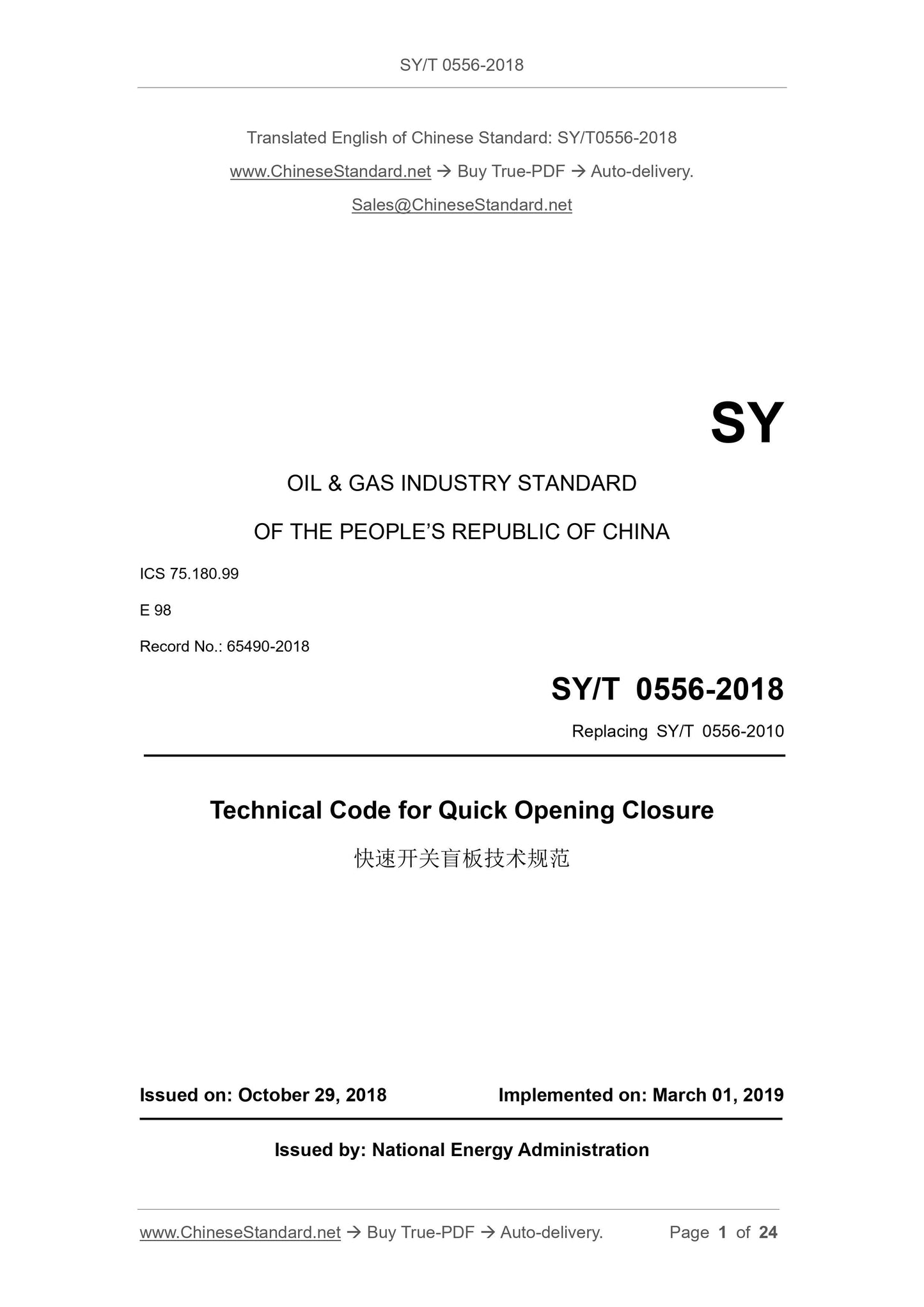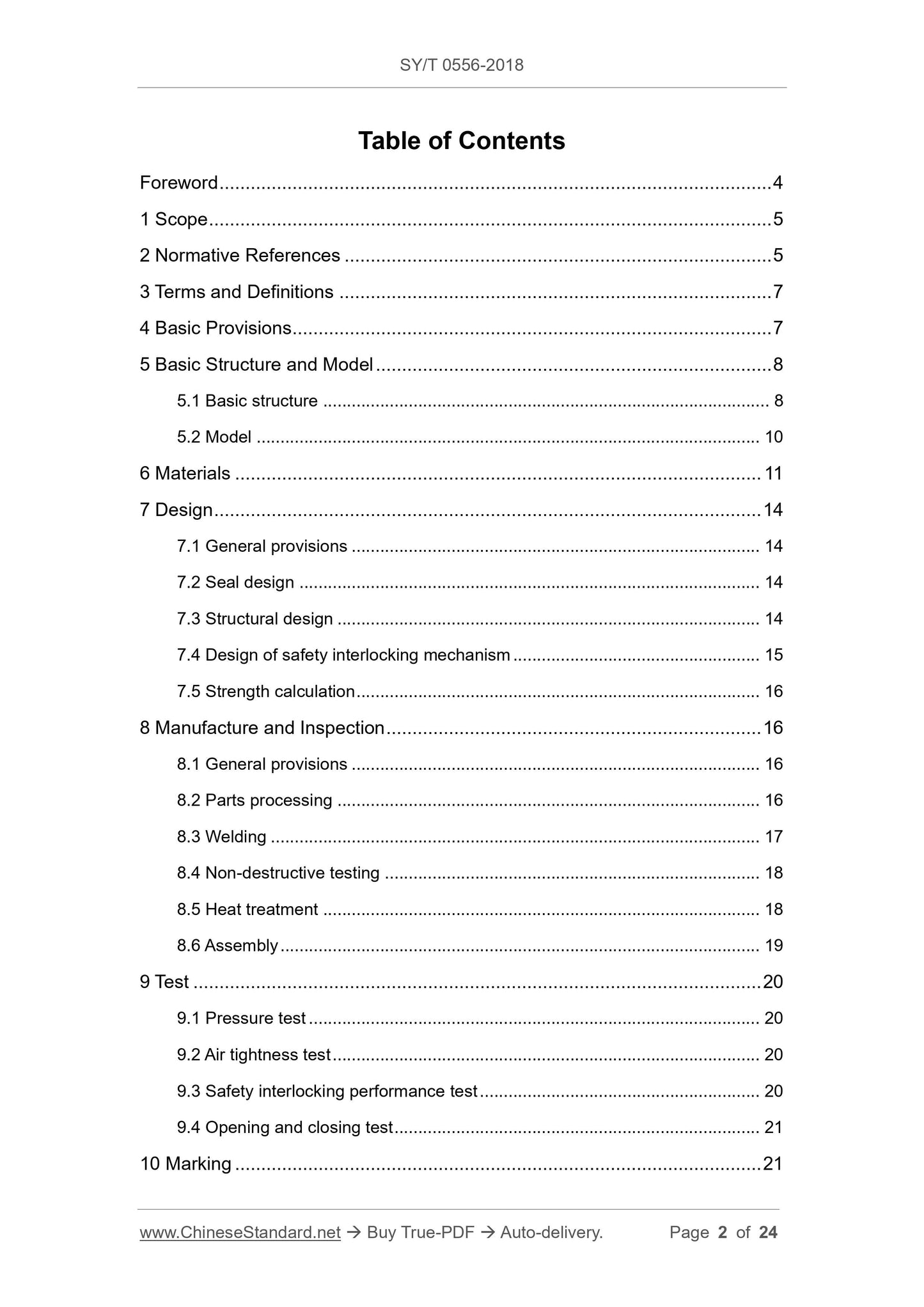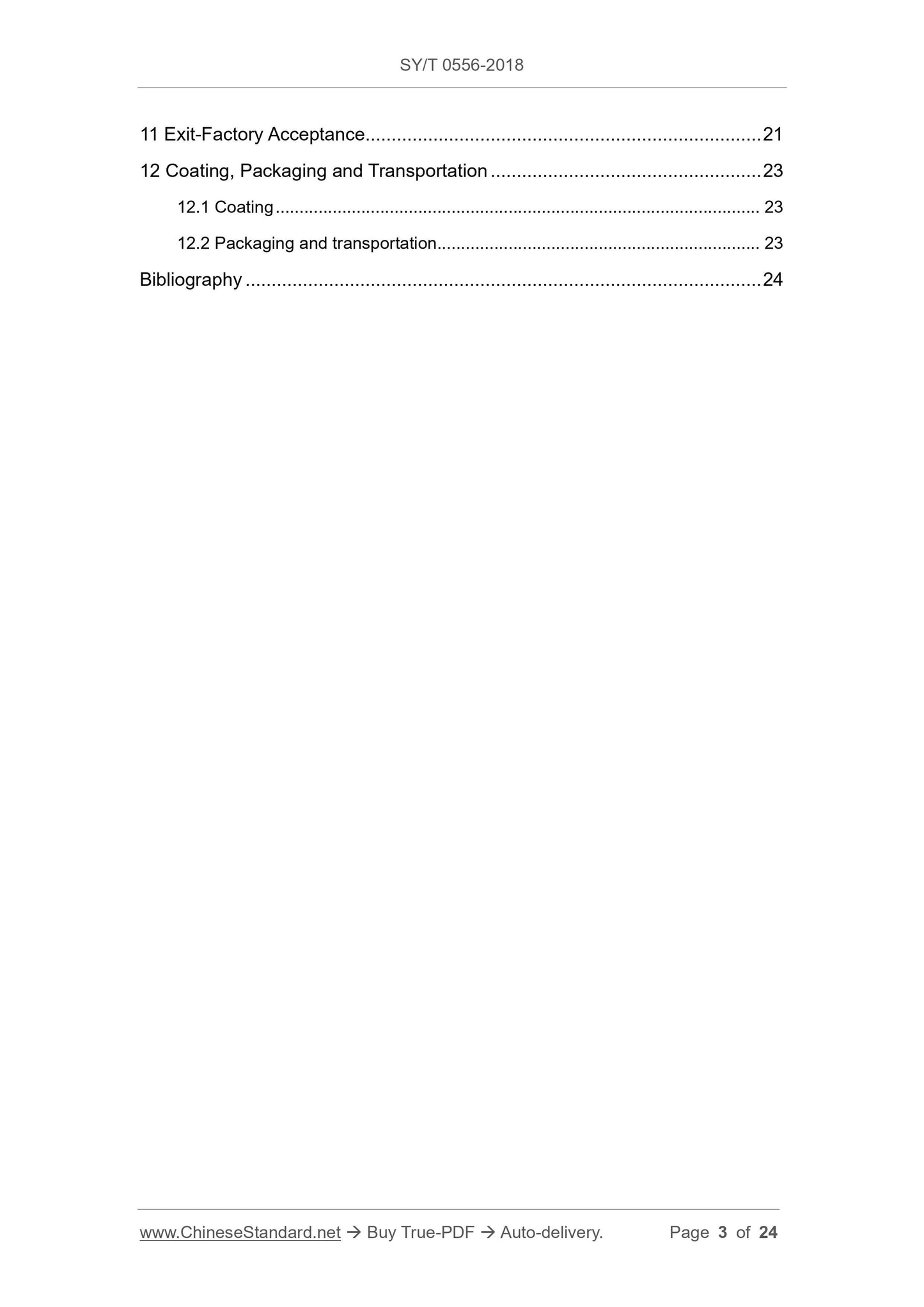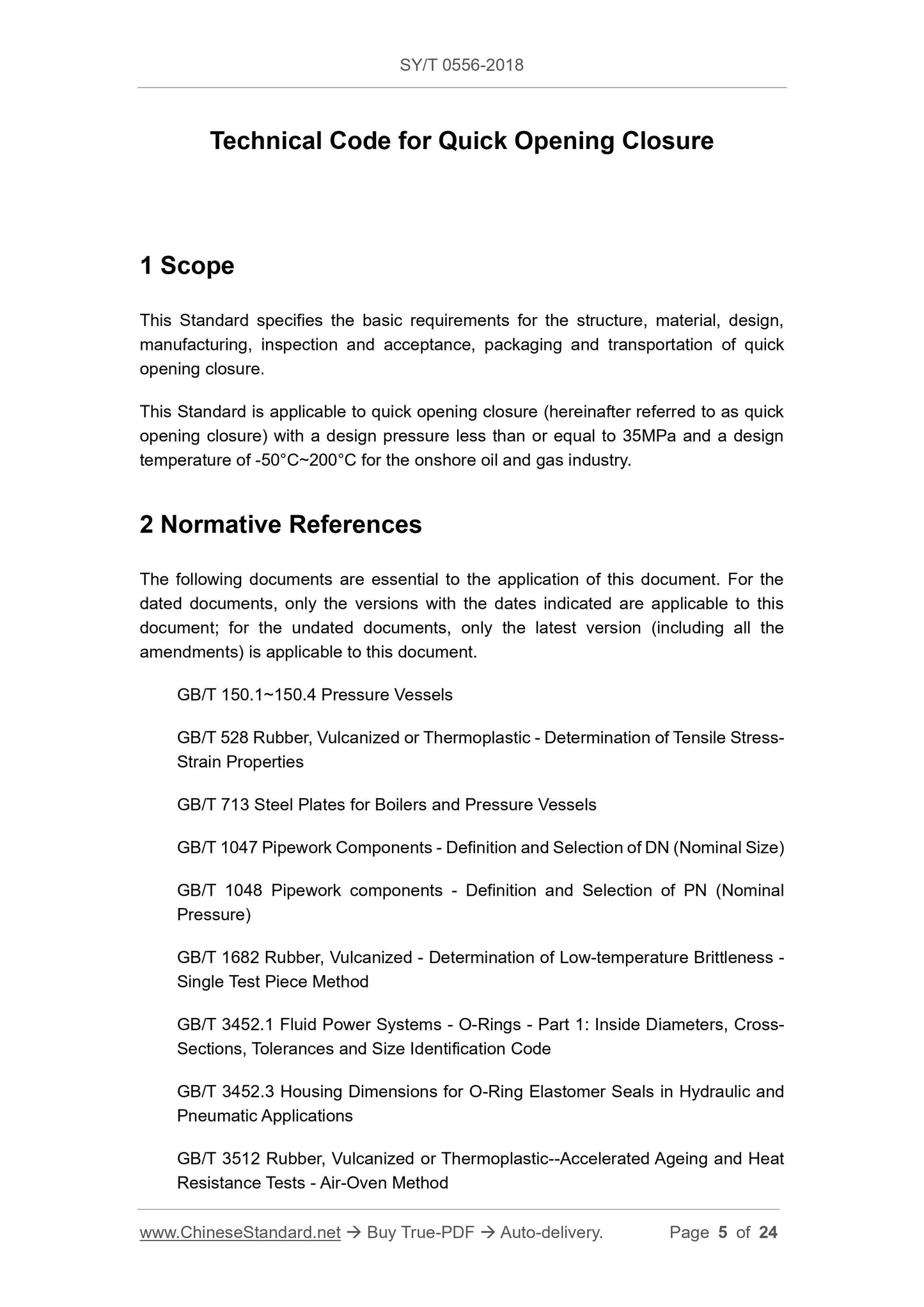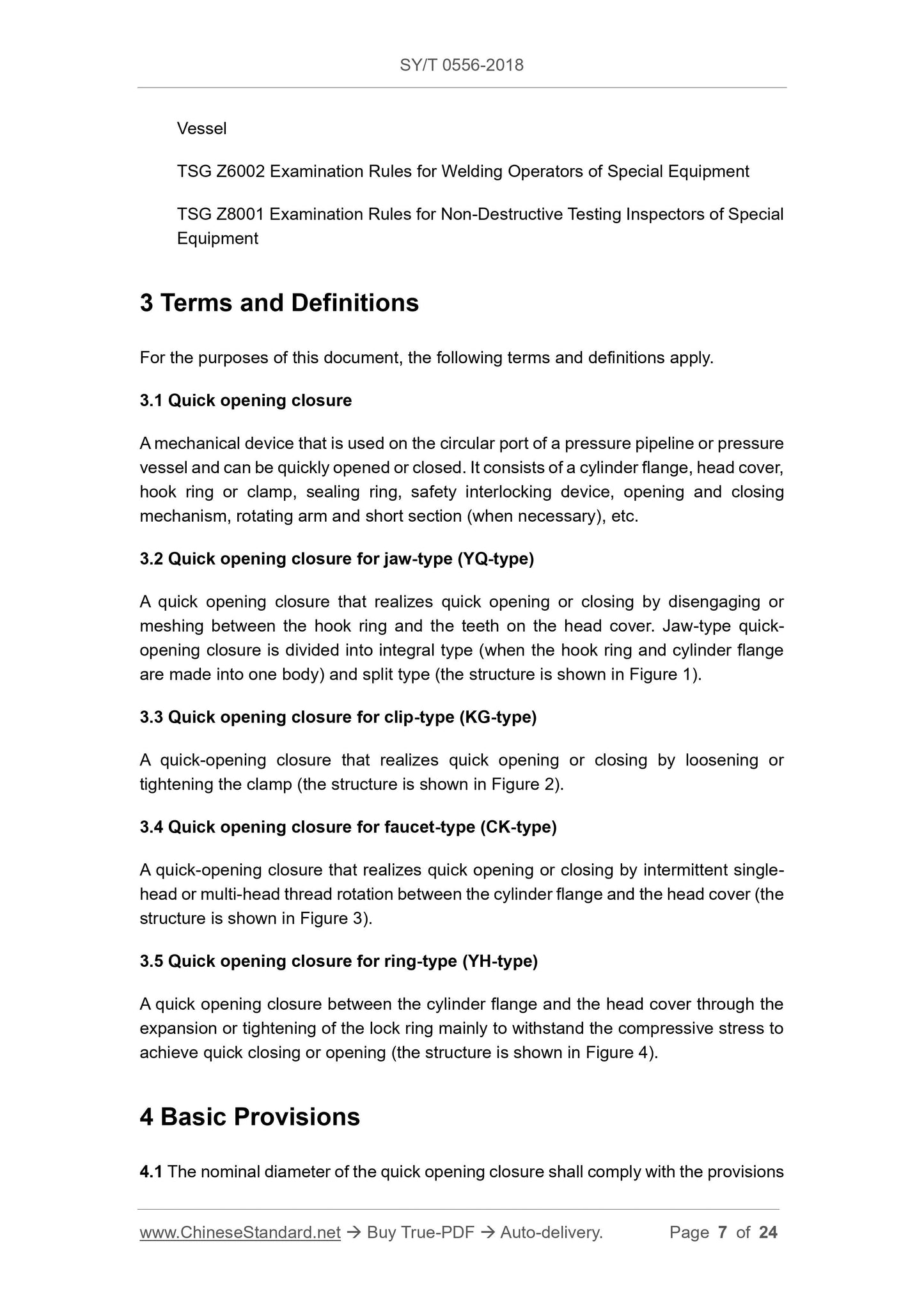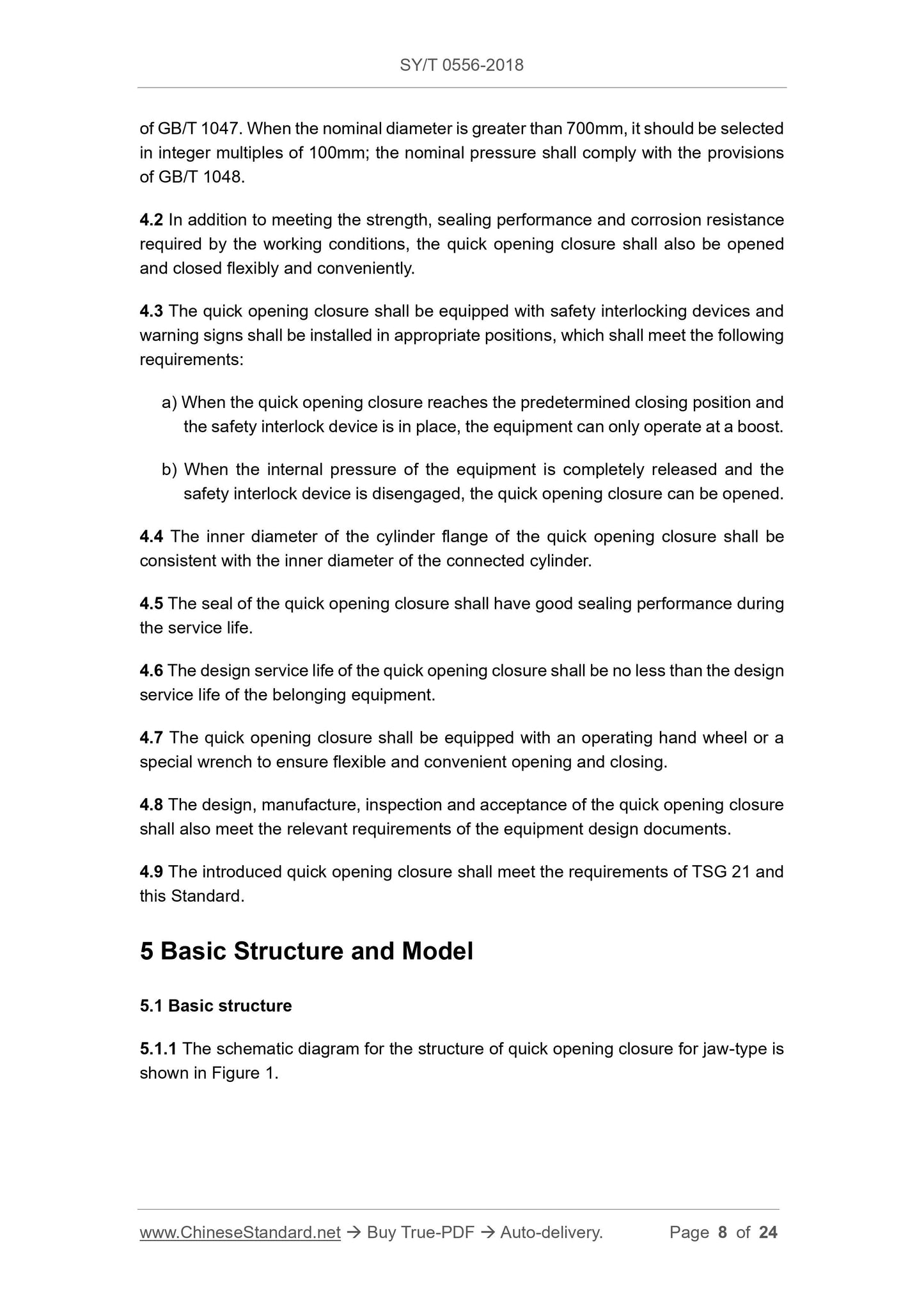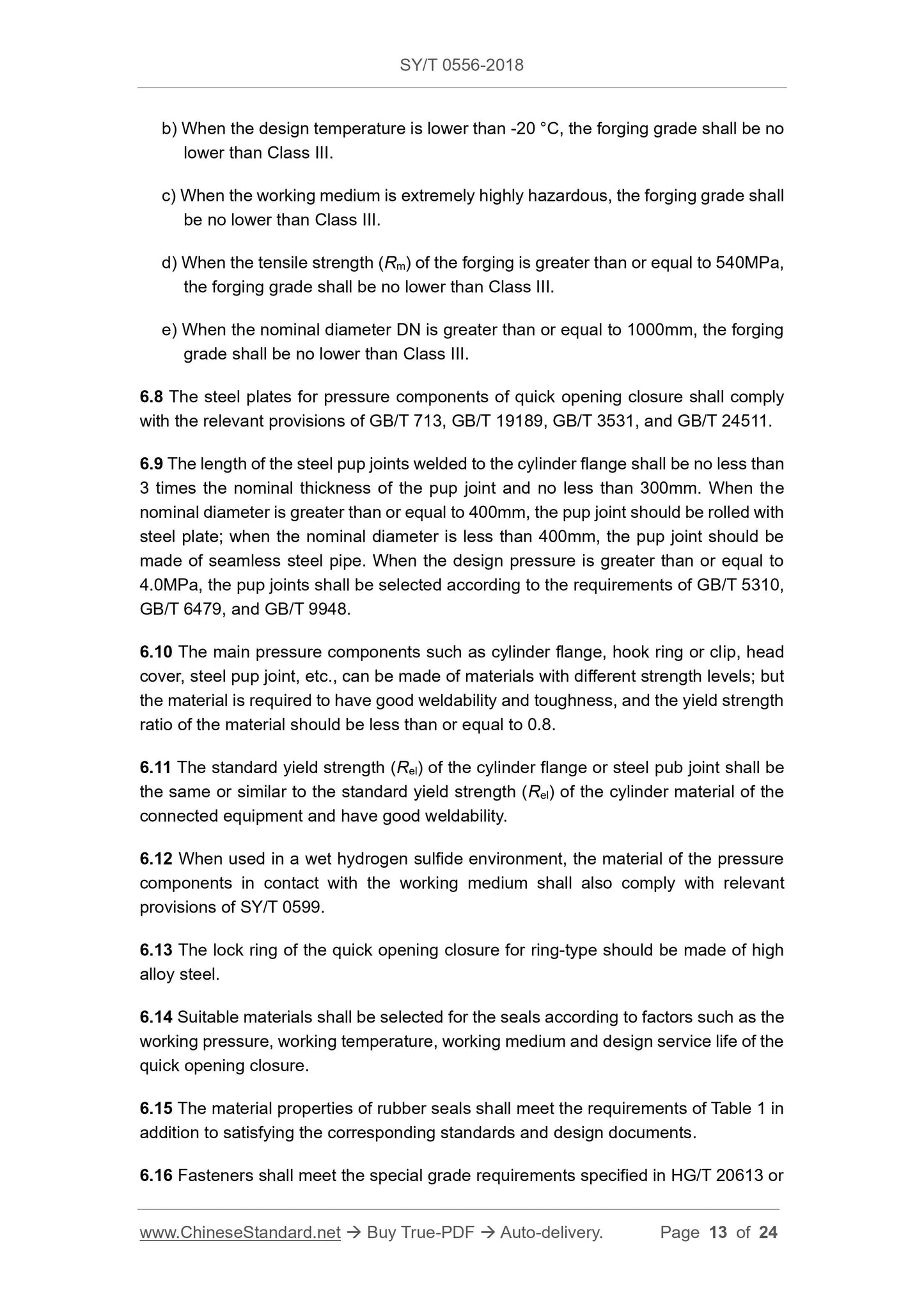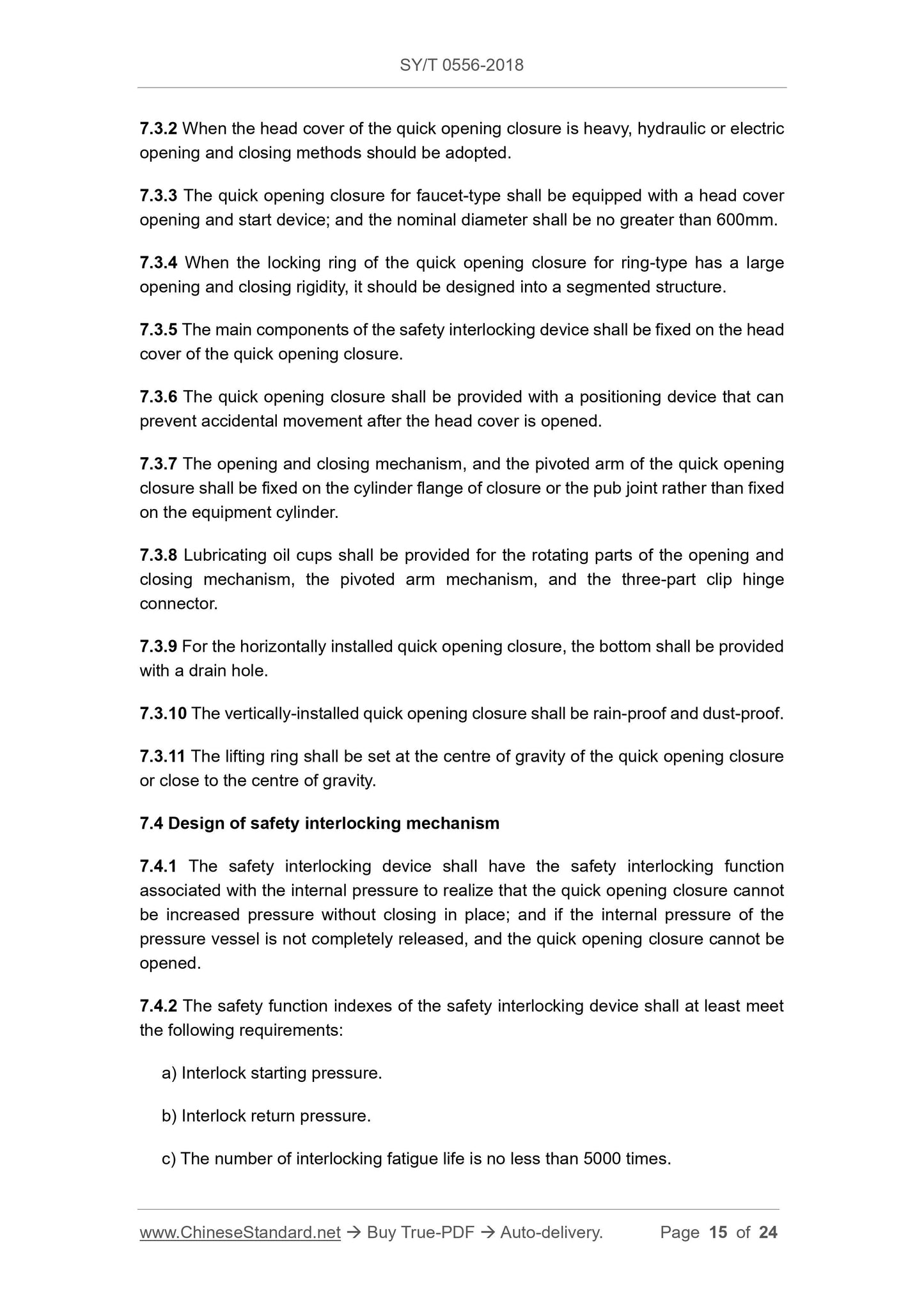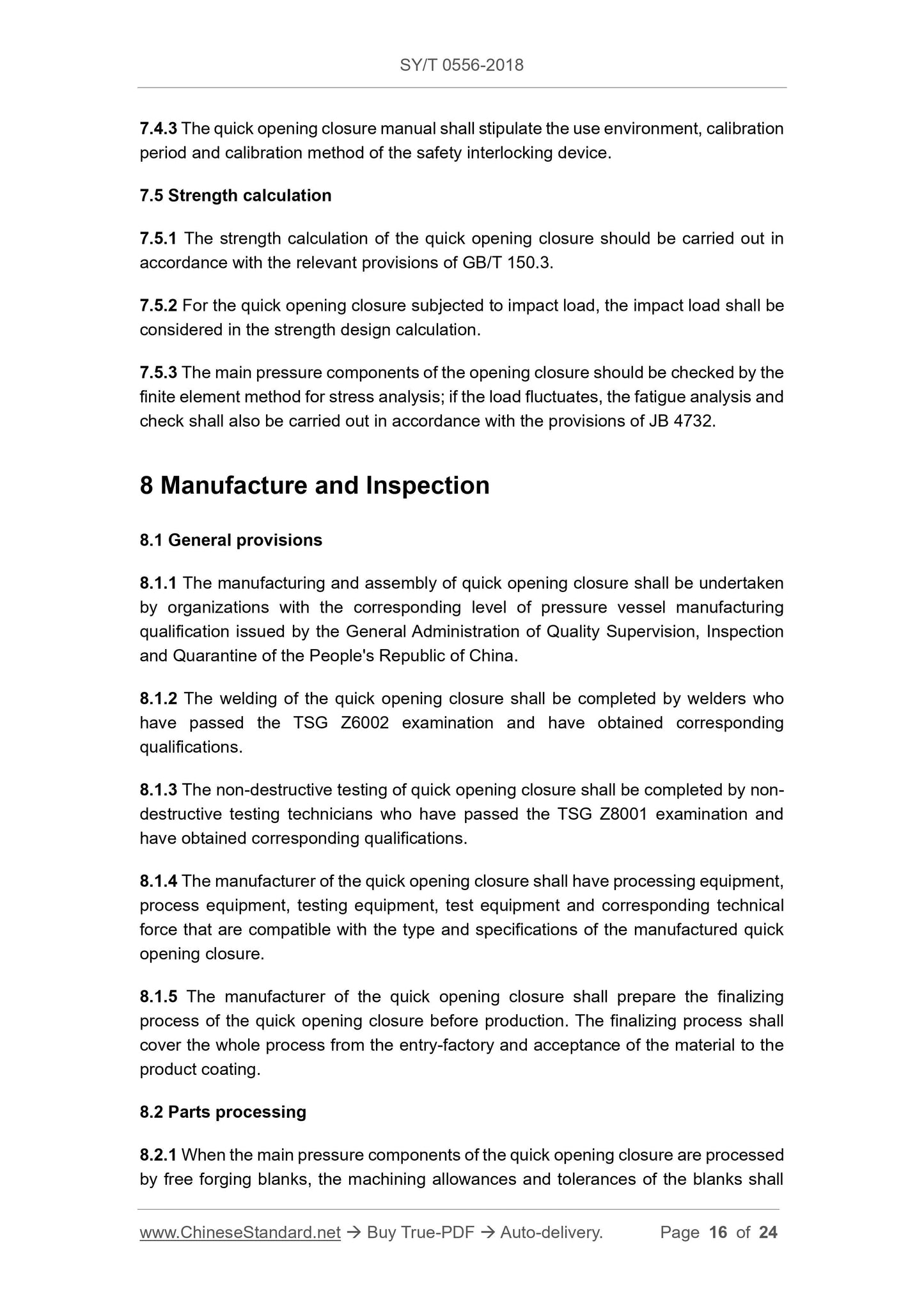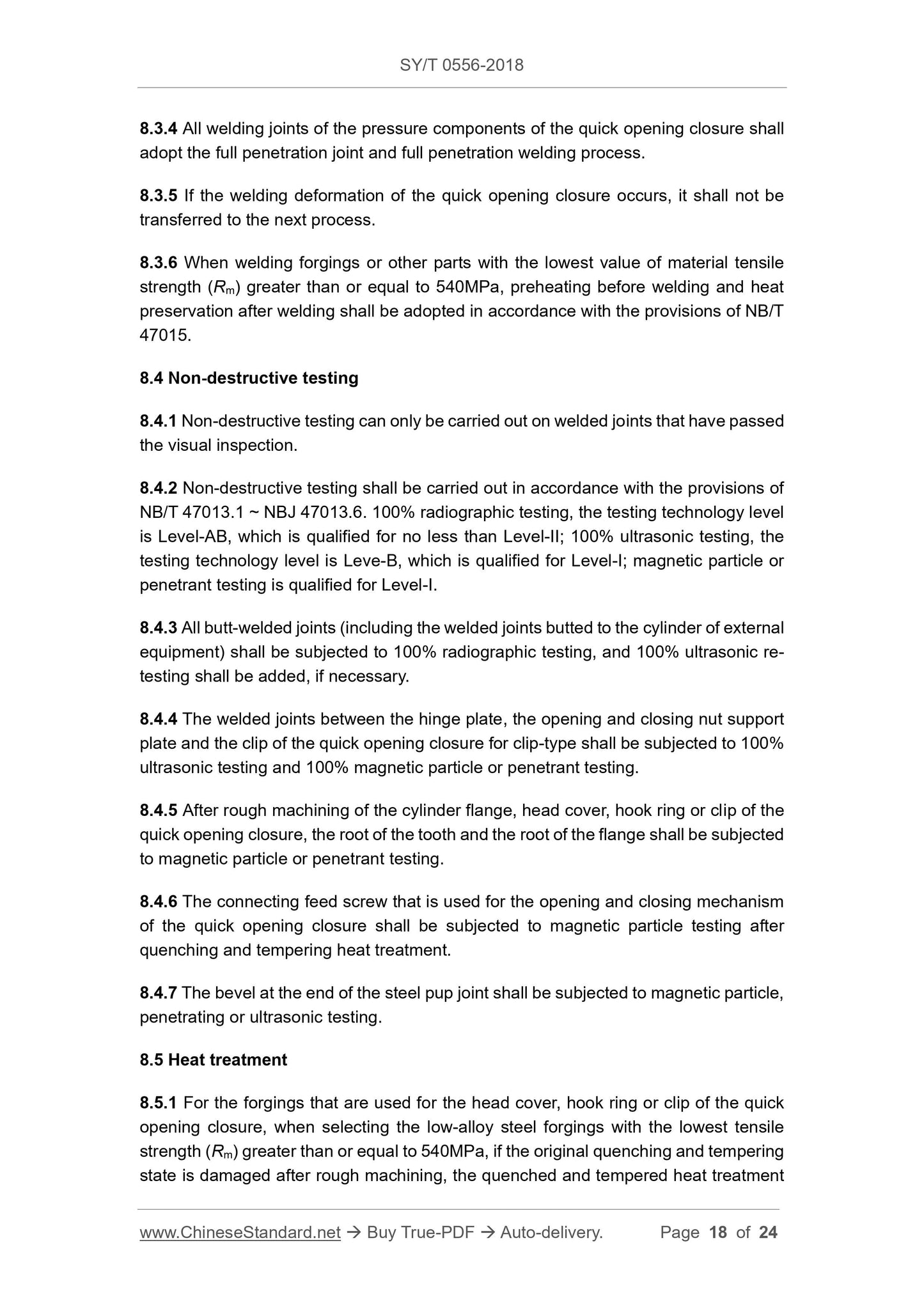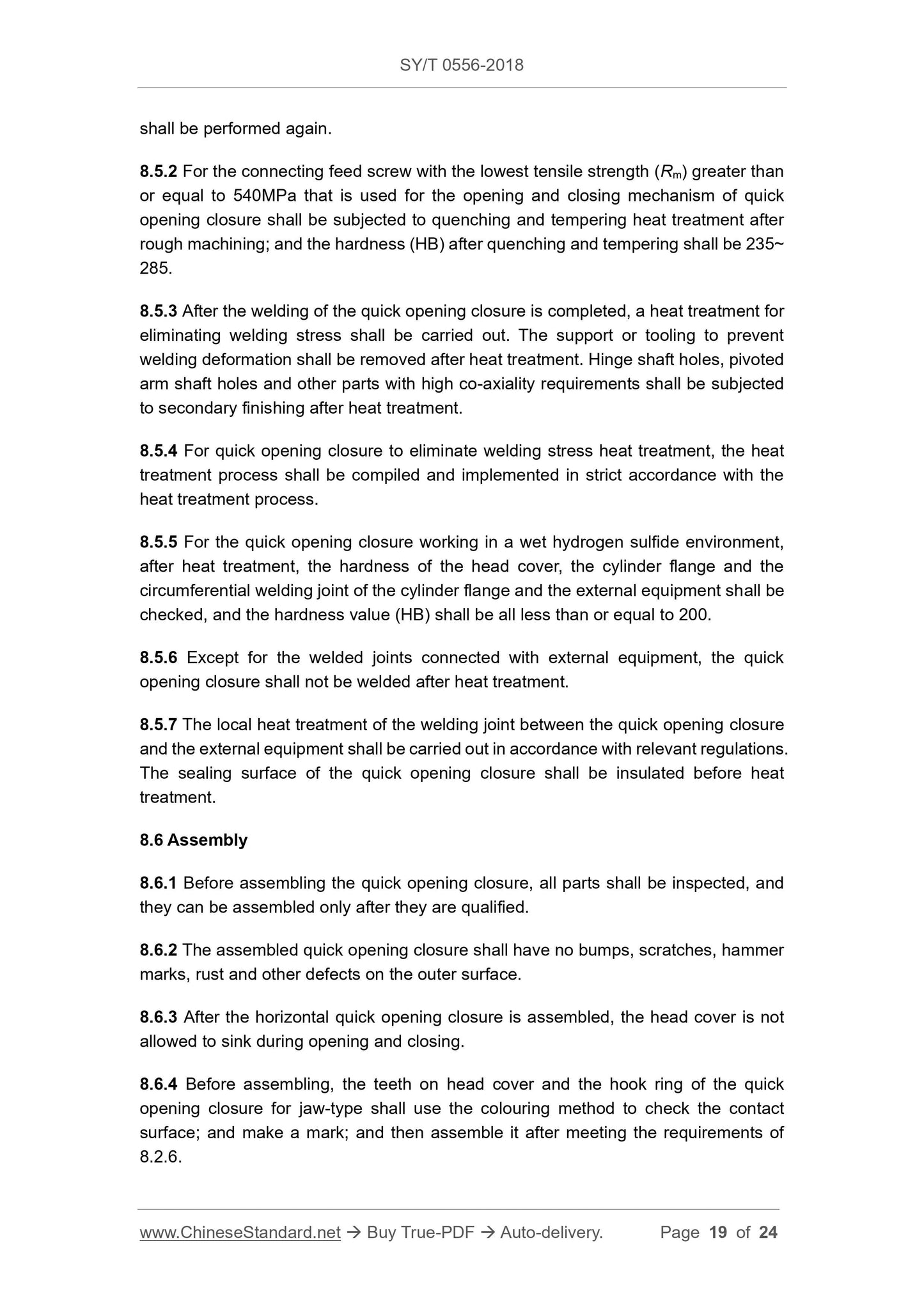1
/
of
11
www.ChineseStandard.us -- Field Test Asia Pte. Ltd.
SY/T 0556-2018 English PDF (SY/T0556-2018)
SY/T 0556-2018 English PDF (SY/T0556-2018)
Regular price
$245.00
Regular price
Sale price
$245.00
Unit price
/
per
Shipping calculated at checkout.
Couldn't load pickup availability
SY/T 0556-2018: Technical code for quick opening closure
Delivery: 9 seconds. Download (and Email) true-PDF + Invoice.Get Quotation: Click SY/T 0556-2018 (Self-service in 1-minute)
Newer / historical versions: SY/T 0556-2018
Preview True-PDF
Scope
This Standard specifies the basic requirements for the structure, material, design,manufacturing, inspection and acceptance, packaging and transportation of quick
opening closure.
This Standard is applicable to quick opening closure (hereinafter referred to as quick
opening closure) with a design pressure less than or equal to 35MPa and a design
temperature of -50°C~200°C for the onshore oil and gas industry.
Basic Data
| Standard ID | SY/T 0556-2018 (SY/T0556-2018) |
| Description (Translated English) | Technical code for quick opening closure |
| Sector / Industry | Oil and Gas Industry Standard (Recommended) |
| Classification of Chinese Standard | E98 |
| Classification of International Standard | 75.180.99 |
| Word Count Estimation | 14,115 |
| Date of Issue | 2018-10-29 |
| Date of Implementation | 2019-03-01 |
| Older Standard (superseded by this standard) | SY/T 0556-2010 |
| Quoted Standard | GB/T 150.1; GB/T 150.2; GB/T 150.3; GB/T 150.4; GB/T 528; GB/T 713; GB/T 1047; GB/T 1048; GB/T 1682; GB/T 3452.1; GB/T 3452.3; GB/T 3512; GB/T 3531; GB/T 5310; GB/T 6031; GB/T 6479; GB/T 7759; GB/T 9948; GB/T 12362; GB/T 19189; GB/T 21469; GB/T 24511 |
| Regulation (derived from) | National Energy Administration Announcement No.12 of 2018 |
| Issuing agency(ies) | National Energy Administration |
| Summary | This standard specifies the basic requirements for the structure, materials, design, manufacture, inspection and acceptance, and packaging and transportation of fast switch blind plates. This standard is applicable to fast-switching blind plates (hereinafter referred to as quick-opening blind plates) with a design pressure of less than or equal to 35 MPa and a design temperature of 50 ��C to 200 ��C for the onshore oil and gas industry. |
Share
